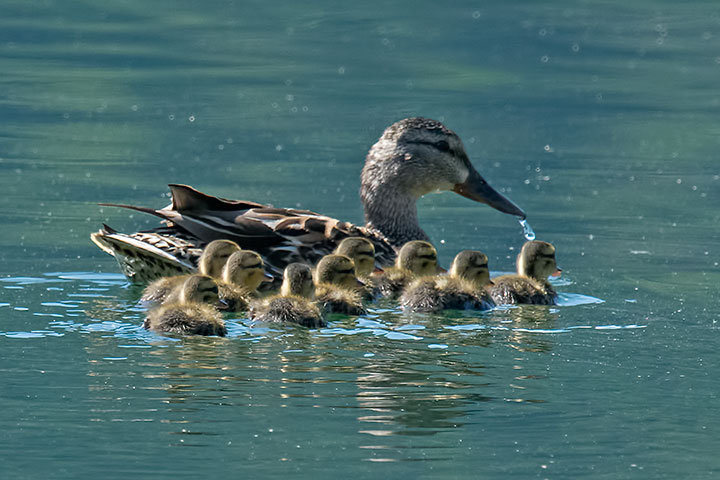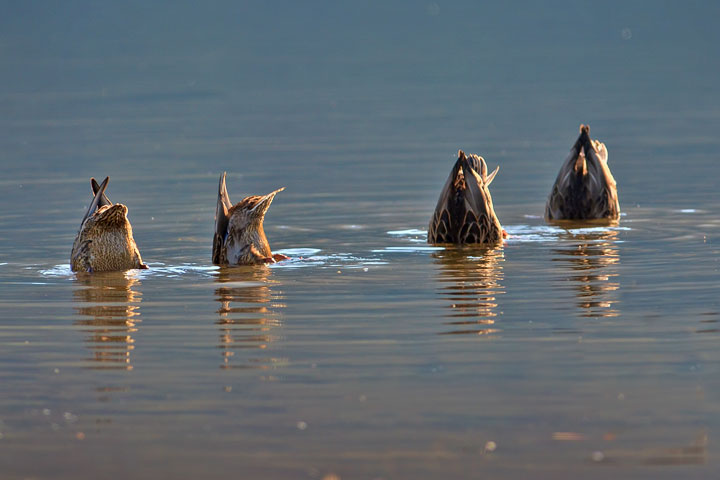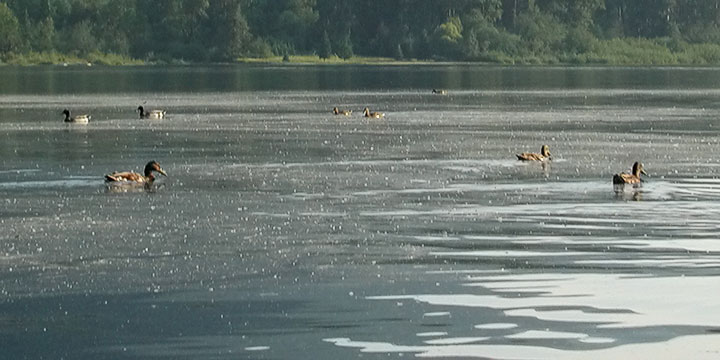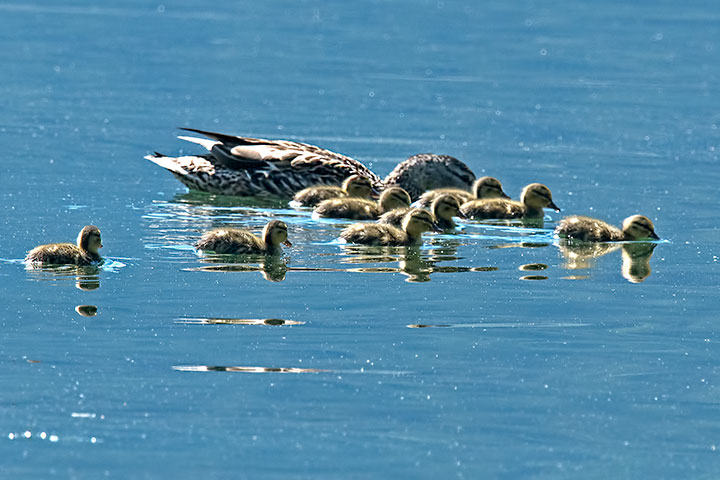How is it possible to use the first picture to discuss surface-water convergence and not even mention the word, cute (oops)? Well, there is something interesting here that illustrates both water flow and flexible feeding. This Mallard hen and her nine chicks are feeding on detritus in a region of surface-water convergence.

We are used to thinking about a Mallard dabbling in the shallows. Rather than diving, it will tip up and forage on the bottom with its bill.

Yet, sometimes Mallards can be seen feeding in waters that are much too deep for dabbling on the lake bottom. They are feeding on organic material on the water’s surface. As can be seen in this image, this material has collected some places and is absent in others. The clue to this is the convergence or divergence of surface waters. The width and depth of Kootenay Lake varies greatly along the West Arm (where these pictures were taken). The flow along the arm is fairly gentle, taking three or four days to travel the thirty kilometres. Owing to the variable width and depth, sometimes deeper water must rise to the surface where it spreads (diverges), sometimes surface water converges and sinks. Any floating debris becomes concentrated in regions of surface water convergence. For Mallards, this is a bonanza, a wealth of accessible food even in deep water.

Return to the family introduced in the first picture. The small chicks cannot dabble in shallows an adult would use. However, where a convergent surface flow has concentrated food, all can comfortably feed.


Thanks again for the explanation and of course the cute. 🙂
Alistair,
Doesn’t variable depth also play a role?
Derek
Derek, I had mentioned that one place, but not the other. I have fixed it. Thank you.